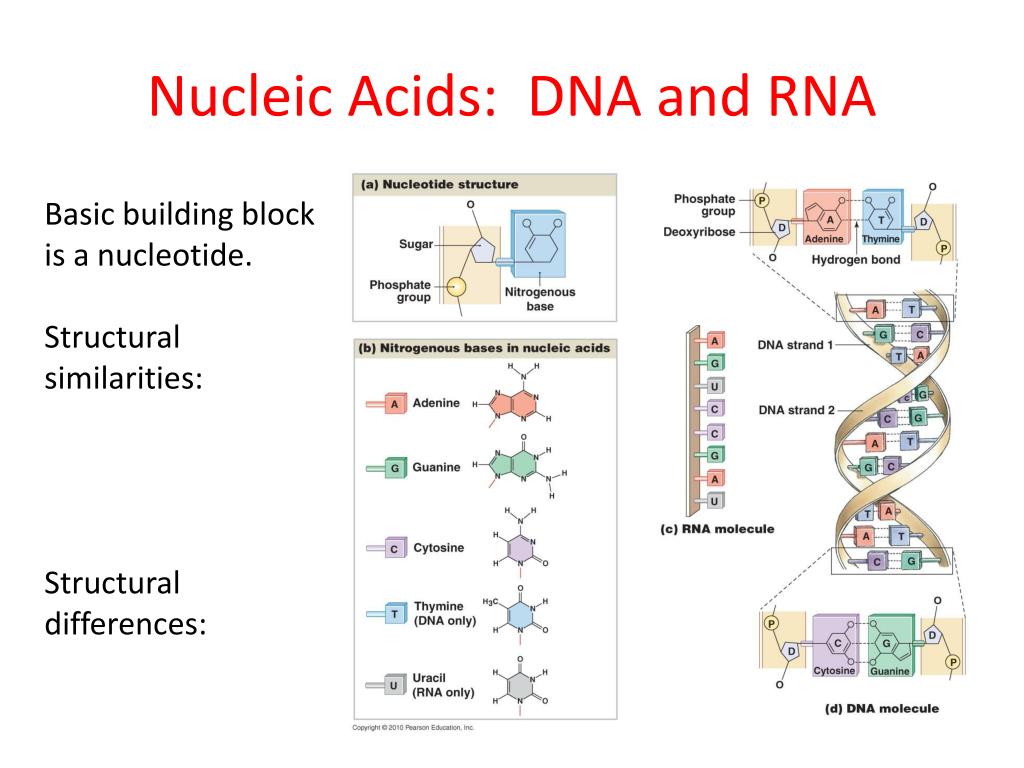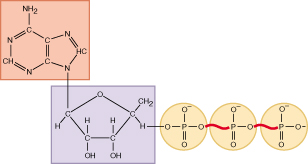


The structural difference between these sugars is that ribonucleic acid contains a hydroxyl (-OH) group, whereas deoxyribonucleic acid contains only a hydrogen atom in place of this hydroxyl group. The sugar in RNA is ribonucleic acid, which contains ribose. The sugar in DNA is deoxyribonucleic acid, which contains deoxyribose. Deoxyribose and ribose are two of these sugars.

The pentose sugars found in nucleotides are aldopentoses. These form two groups: aldopentoses and ketopentoses. The pentose sugar is a 5-carbon monosaccharide with the formula (CH 2O) 5. ATP is a crucial component of respiration and photosynthesis, amongst other processes.įigure 4: The molecular structure of nucleoside mono-, di- and triphosphateĪ polynucleotide is a chain of more than 20 nucleotides joined by a phosphodiester bond. If more phosphates bond to the nucleotide (nucleoside monophosphate), it can become a nucleoside diphosphate (if two phosphates bond), or a nucleoside triphosphate (if three phosphates bond), such as adenosine triphosphate (ATP). Accordingly, a nucleotide can also be a nucleoside monophosphate(figure 4). You know that a nucleotide is differentiated from a nucleoside by one phosphate group. What are Nucleoside Diphosphates and Triphosphates? These sides of the ladder are hydrophilic (attracted to water) and therefore allow the DNA molecule to bond with water. This is critical, as the hydrogen bonds which join the nitrogenous bases are not very strong. These phosphate groups are important, as they form phosphodiester bonds with the pentose sugars to create the sides of the DNA “ladder”. This addition changes the nucleoside from a base to an acid.

The phosphate group (PO 4) is what differentiates a nucleotide from a nucleoside. Substitutions can also be problematic although less so, as they may change the identity of an amino acid in the protein code. Deletions and insertions of nucleotides in this situation can lead to a complete frame shift disrupting the synthesis of the protein in question.
#BUILDING BLOCKS OF DNA AND RNA CODE#
In protein synthesis, for example, the code is read in triplicates where three bases code for a particular amino acid. The order in which base pairs appear determines the functioning of your physiology. This pairing is, therefore, crucial for genetic function, and is the foundation for DNA replication and gene expression. This wouldn’t do at all because the very careful packaging, unwinding, and winding of the DNA would be a mess with some more difficult to maintain than others. Otherwise, there would be bumps and crevices on the molecule. This architecture is very important for the perfect construction of the DNA molecule. The bond formed is a hydrogen bond, and is responsible for the rungs formed in the DNA “ladder”. You’ll also notice that this means that a pyrimidine is always bonded to a purine. Adenine always pairs with thymine guanine is always bonded to cytosine. Nitrogenous bases form base pairs with each other in DNA. The next logical question, of course, becomes “What then is a pyrimidine, biochemically speaking”? Well, pyrimidines are a class of nitrogenous compounds that have only one heterocyclic ring.įigure 3: Chemical structure of purines (A, G) and pyrimidines (C, T/U) Base Pairs A purine is a heterocyclic aromatic organic compound that comprises a pyrimidine ring that is joined to an imidazole ring. Now that you get the general idea of purines versus pyrimidines let’s speak biochemistry. In short, pyrimidines have only one ring while purines have two (figure 3). These contain a nitrogenous base in the form of a nine-member double ring. Guanine and adenine, on the other hand, are purines. That is, their molecular structure comprises a nitrogenous base in the form of a six-member single ring. Cytosine, uracil, and thymine are all pyrimidines. Nitrogenous bases can be further classified as pyrimidines or purines. In RNA, Uracil (U) takes the place of Thymine. These nitrogenous bases are Adenine (A), Cytosine (C), and Guanine (G) which are found in both RNA and DNA, and then Thymine (T) which is only found in DNA. Specifically, these building blocks are what we now know as the nitrogenous bases found in DNA and RNA.Ī nitrogenous base is a molecule containing nitrogen, with the chemical properties of a base due to a pair of electrons on the nitrogen atom. Levene observed that DNA contained four similar building blocks, in roughly equal amounts. The word “nucleotide” was first coined by P.A.


 0 kommentar(er)
0 kommentar(er)
